On Sunday 13th January, 2019. Rele Arts Gallery opened its doors for its first exhibition of the year, the 4th edition of its Young Contemporaries Initiative which will end on the 3rd of March, 2019. The exhibition showcases the works of six young artists, Fidelis Joseph, Abraham Ogundele, Osaru Obaseki, Tonia Nneji, Osaze Amadasun and Stephen Tayo who explore themes of history, heritage, trauma and identity.
Fidelis Joseph presents “The Spirit of Salkur”, a series of abstract acrylic and watercolour paintings which showcase the intersection of human and animal spirits in metaphysical spaces, as manifested in the creation of a Salkur. A Salkur is a member of a ritual group in Margi, Adamawa state, whose spirit is bound with an animal, usually a powerful beast, like a lion, during initiation. The Salkur society is a secret society and the identity of a Salkur is only discovered when the Salkur gets angry and exhibits his superhuman strength.
The artist uses abstract paintings to portray his perception of the metaphysical disruption that occurs upon the creation of a

Abraham Ogundele uses pastel colours and acrylic paint to present “A Wonderful Space”, a
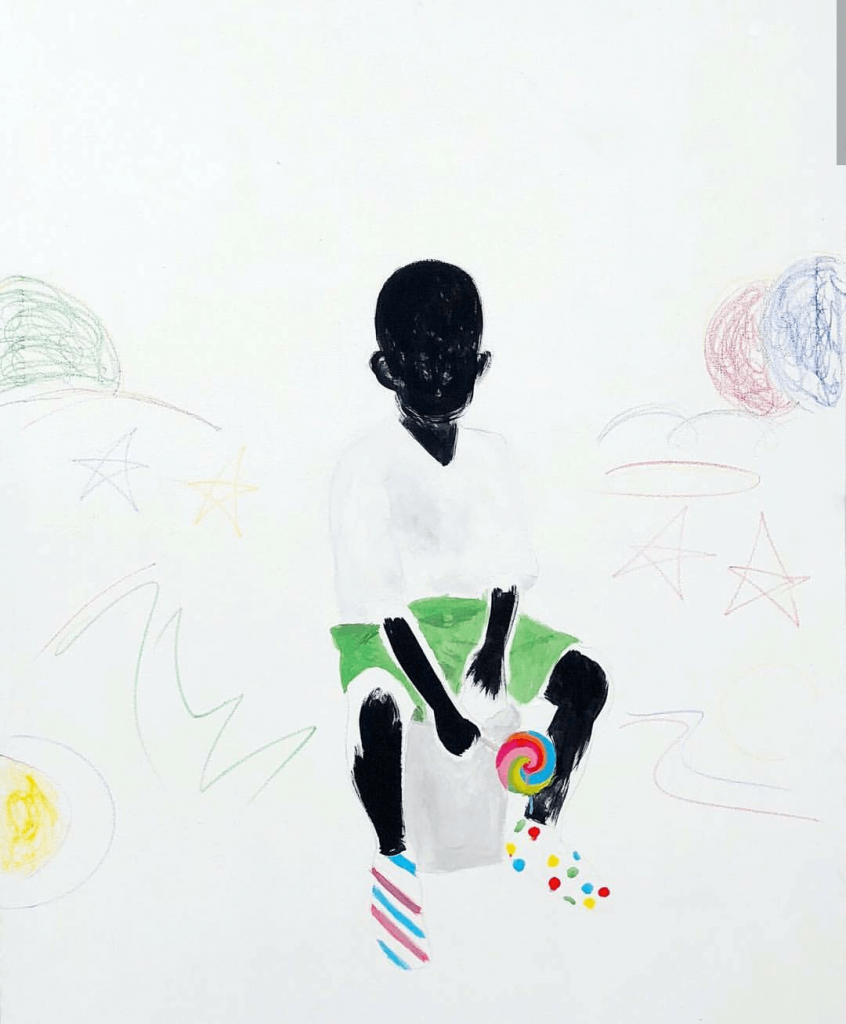
In “Red Earth is Blooming”, Osaru Obaseki, using sand and acrylic as a way of synergizing the ancient and the modern, addresses how the environment affects the mental development and personality of its inhabitants. She presents the human form as plants because just like plants, humans need the right environmental conditions to bloom. In “The Absorbing Child” she uses foliage and etchings to present the impact of the political and physical climate on growing minds and in “Migration” she showcases the effect of urban migration on the deserted rural spaces, the congested cities and the overwhelmed migrants. “In Her Glory” the focal point of the
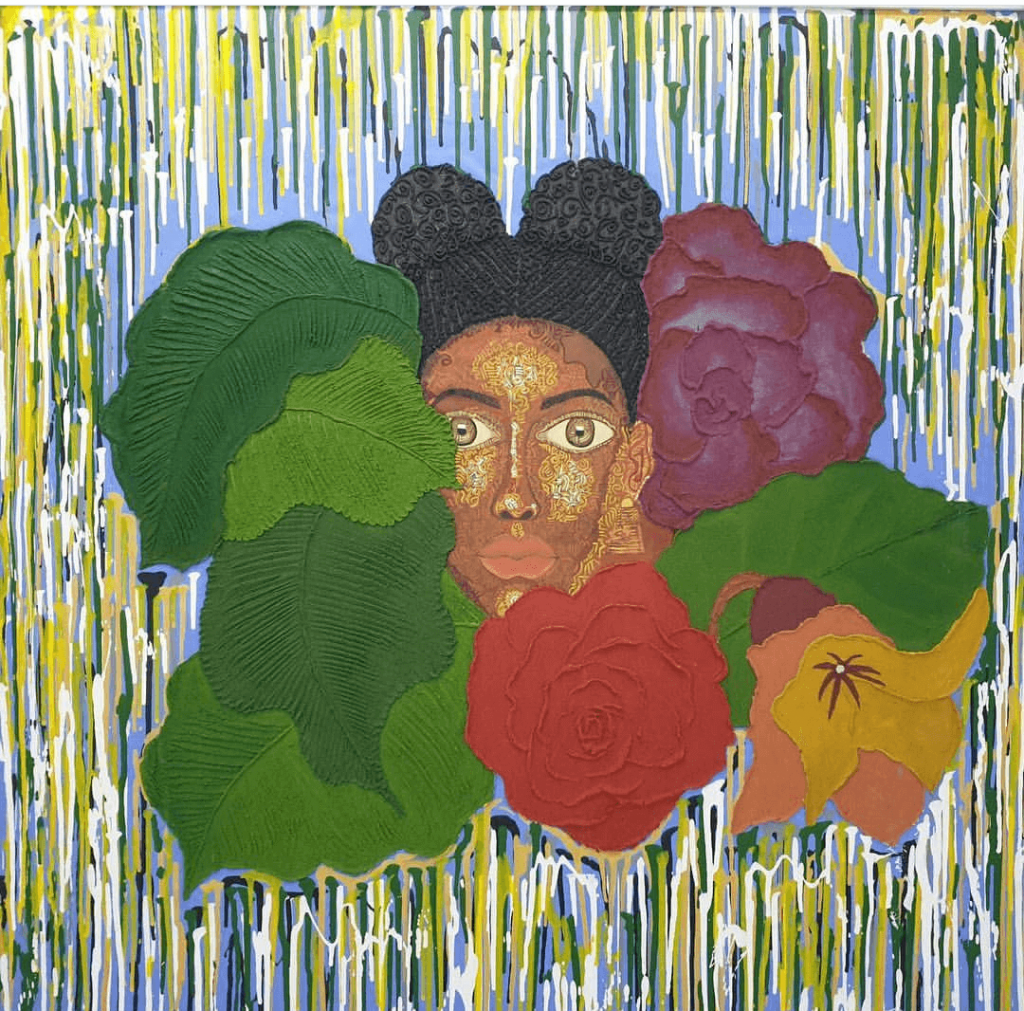
Tonia Eneji uses drapery and colours contrasted with depictions of the female silhouette to express the trauma of a female living with PCOS-Polycystic Ovarian Syndrome. Her series, titled “Six Days of Holding” consists of six works, one for each day of her period as a sufferer of the syndrome, each of which is named after a traditional Igbo fabric, ranging from “Abada” to “Plain George”. The fabrics showcased in the pictures represent the wrappers sold by the artist’s mother to pay for the medical bills incurred in the search of a cure for the artist’s ordeal, and the bold use of colours, the bright reds and the stylistic poses showcase the trauma she experienced, living with the ordeal.
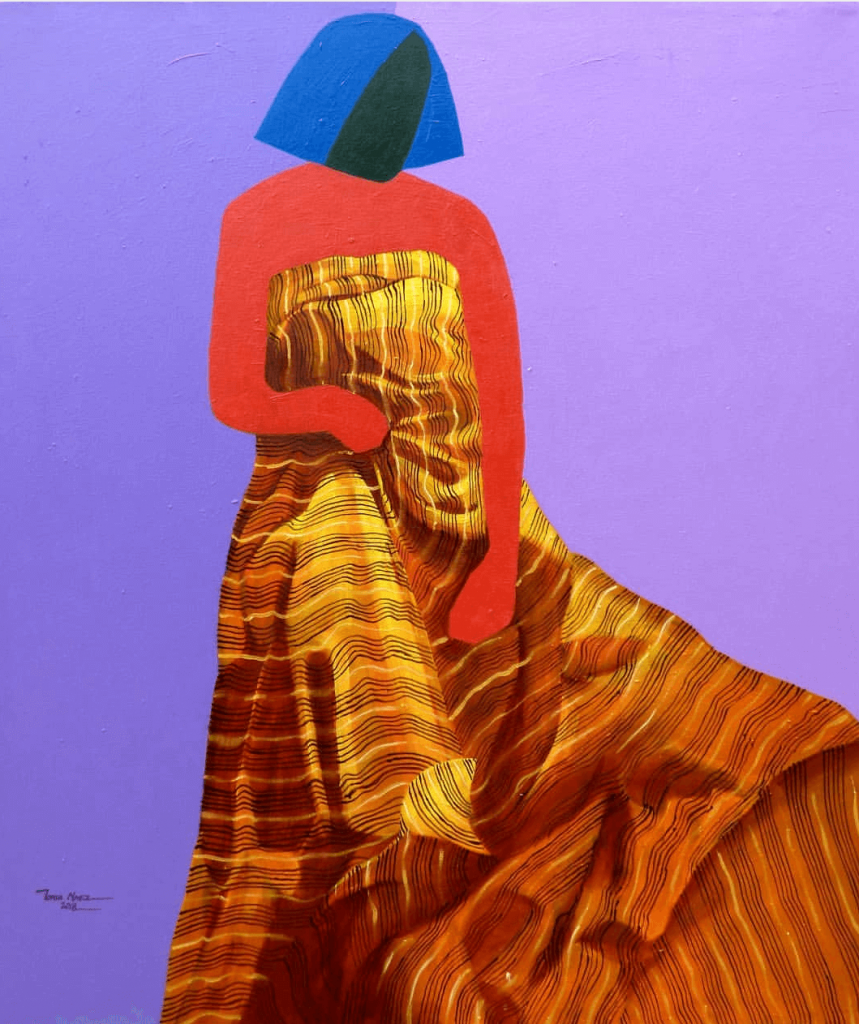
Osaze Amasadun, in “Once upon a King”, presents paintings inspired by the art and events of the ancient Benin Kingdom. He depicts significant events that occurred during the reign of Oba Esigie (1504 – 1550). His works tell a story, from his first work which depicts “The Baptism of Oba Esigie” to “The Revelation of Ahianmwen-Oro (“Bird of Prophecy”)” to his portrayal of the “Fall of the Bird of Prophecy (that cries disaster)” to the crowning of Queen Idia as “The Latent Oba of Benin”.
His work is informed by anthropological data, documentaries on the ancient Benin kingdom, studies of the Benin brass casters works and Benin mythology. And he uses easily recognizable cultural motifs like the leopard and the cock (Okukor) in his interpretation of the depicted events.
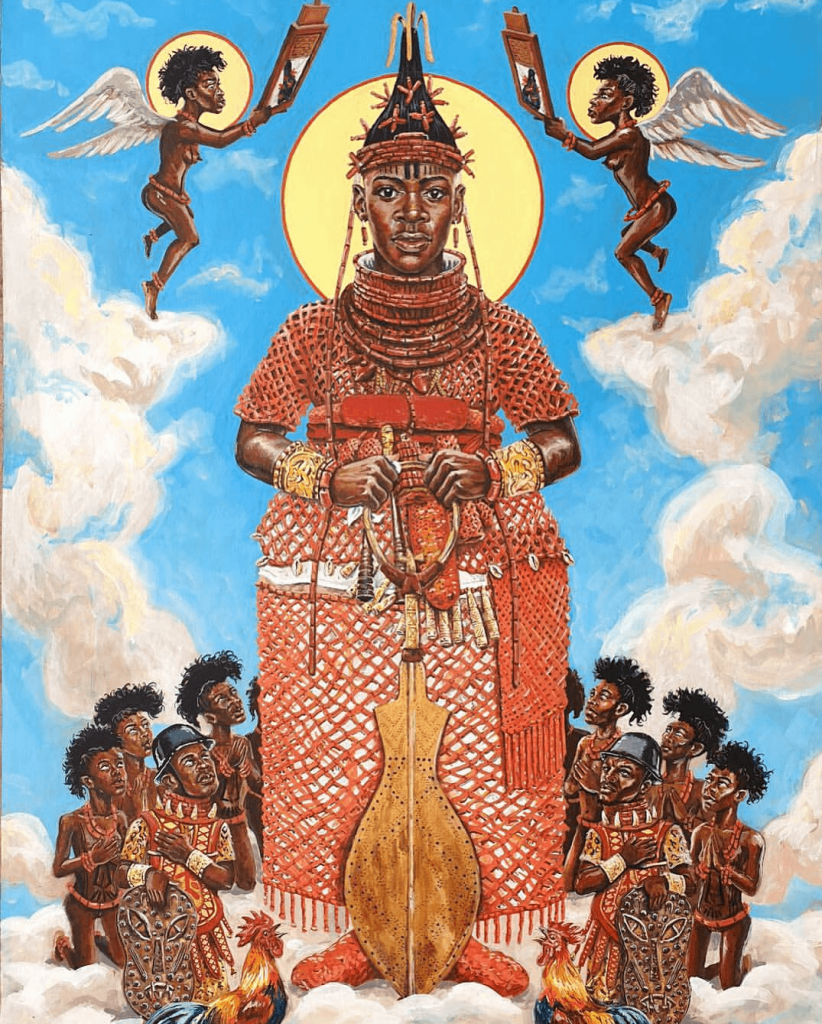
Stephen Tayo’s “Ibeji” is a series of photographs which explore identity and kinship. His work showcases different sets of identical twins, and explores the psychological impact of having one’s identity defined by another. His subjects adopt formal poses popularized in the 50th century by the likes of Samuel Fosso and Malick Sidibe.
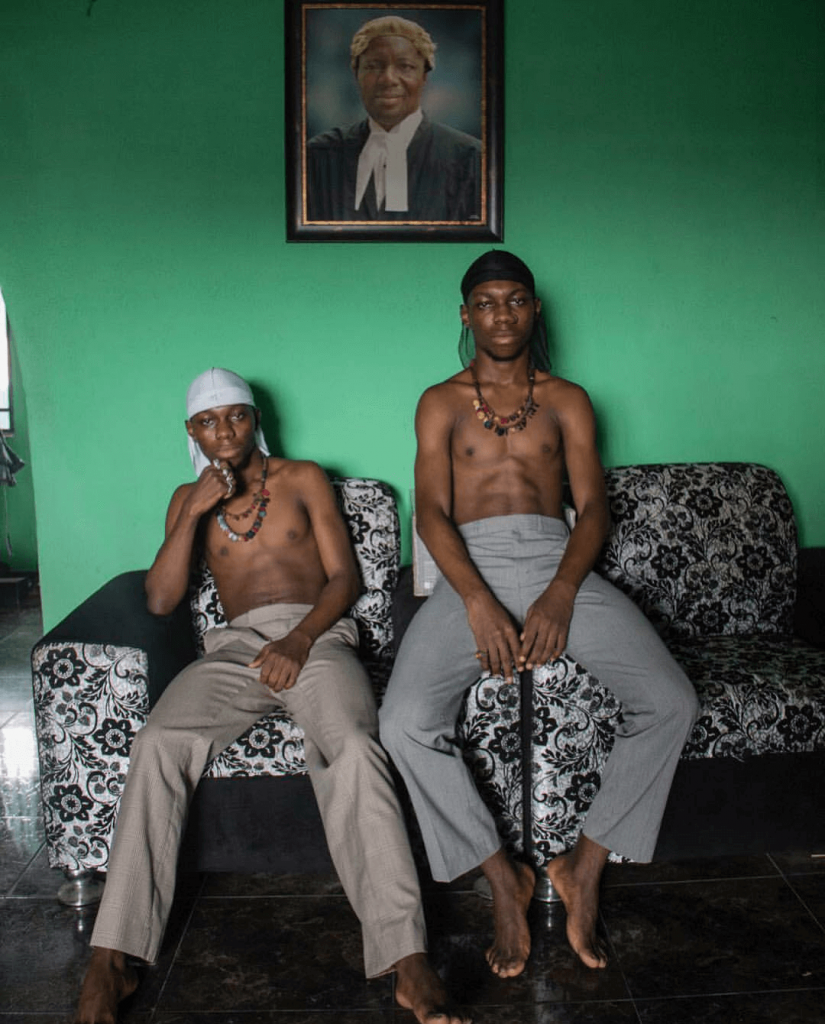
Six talented young artists, showcasing beauty, art and culture; you should go see it for yourself.



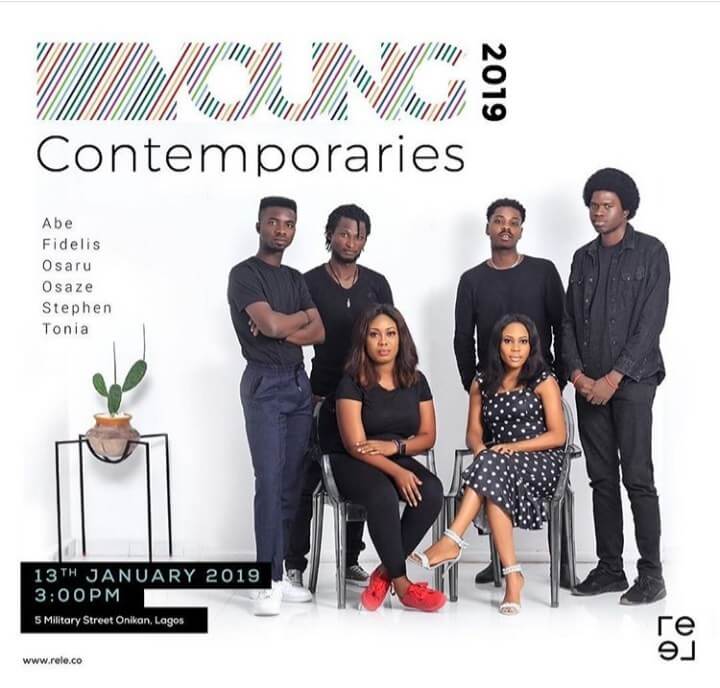
2 comments
Comments are closed.